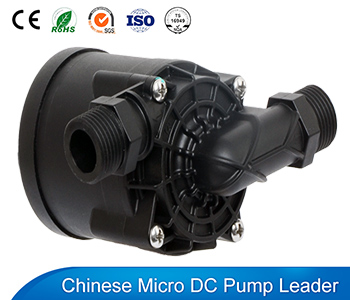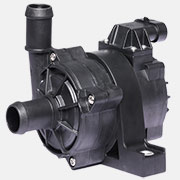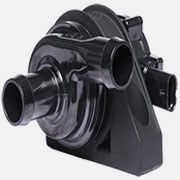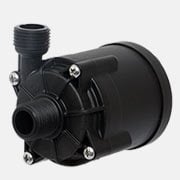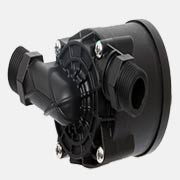Hot Water Booster Pump
Home > Hot Water Booster Pump
Hot water booster pump refers to a dc centrifugal water pump, that water in the pump chamber rotates at high speed along with the impeller when the pump work, and generates centrifugal force to pressurize the hot water. It is also known as a water pressure booster pump, pipeline booster pump. Its main function is to carry out a second pressurization for the water inside the original pipe. After that the outlet pipeline pressure is the inlet pressure plus the booster pressure, thus reaches the pressure boost affect. It can solve the problem that the pipeline water pressure is not enough. Or make the shower head outlet water pressure reach the pressure that meets user’s needs.
As a 12v water pump, hot water booster pump are mainly used in hot water circulation and boost, home water booster. And used as a water heater pump for air source water heater, solar water heater, electric water heater, instant water heater, gas water heater and so on.
Standard Hot Water Booster Pump series by VOVYO:
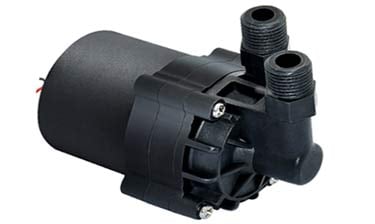
Solar Water Circulation Pump VP40N
Max Head:1.9~8M Max Flow:5.5~10L/min
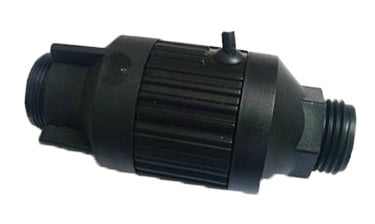
Inline Water Pump VP40R
Max Head:7~10M Max Flow:19~24L/min
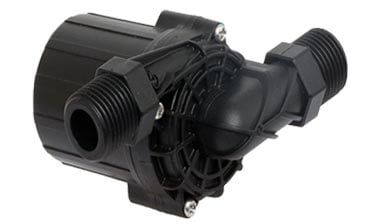
Solar Water Heater Pump VP40S
Max Head:3~8M Max Flow:8~13L/min
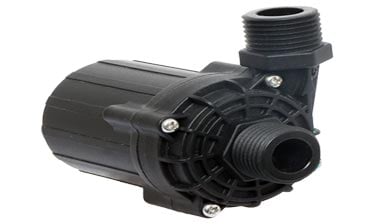
Electric Water Heater Pump VP40T
Max Head:3~8M Max Flow:8~13L/min
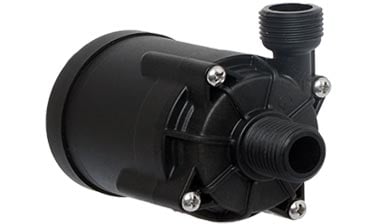
Gas Hot Water Heater Pump VP60P
Head: 32M Flow: 20~26L/min Noise≤ 45dB
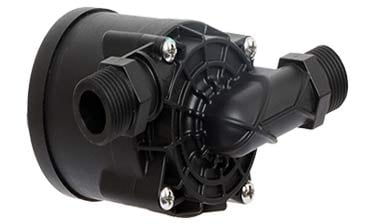
DC Water Heater Pump VP60N
Head: 12M Flow: 21L/min Noise≤ 45dB
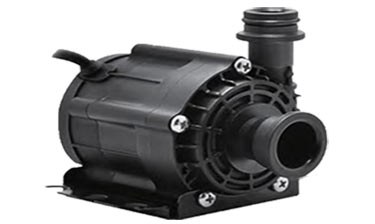
Air Source Water Heater Pump VP60M
Head: 9M Flow: ~L/min Noise≤ 48dB
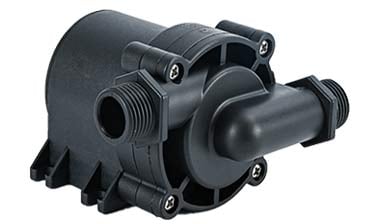
Solar Water Booster Pump VP50C
Max Head:4~8M Max Flow:27~40L/min
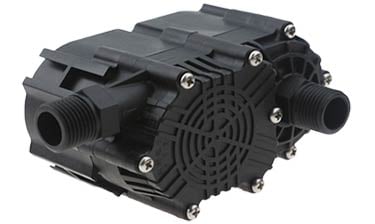
Hot Water Booster Pump VP60F
Max Head:230M Max Flow:20~25L/min
Want to learn more?
Table of Contents
Difference between hot water booster pump and hot water recirculating pump
1. First, different working principle of water booster pump and hot water recirculating pump.
Hot Water Booster Pump: The rotor of the motor drives the impeller to rotate at a high speed when working. And the impeller drives the liquid to rotate at a high speed to form a centrifugal force. So that, the liquid gets high energy and flows out of the impeller. And increase the kinetic energy and pressure energy of the liquid to increase the water pressure.
Hot Water Recirculating Pump: The working principle of the hot water recirculating pump is use the pump to circulate the water. For example, the circulating pump circulates the hot water in the plumbing heating pipe.
2. Second, the difference between water booster pump and water circulation pump
From the installation position of the pump: People generally install the water pressure booster pump on the water inlet pipe; While, it should install the small water circulation pump on the return pipe to pressurize the system water pressure to circulate water.
From the scope of application: We generally use water booster pumps in central heating systems. Or use them in water heater that with small pressure which requires supercharging. While people mainly use the circulation pump for self-heating system. Or use them for water circulation in large and medium-sized household heating systems. As well as use them for floor heating and hot water circulation.
From the supercharging pressure: Booster pump mainly solves the problem of small water pressure in system. It belongs to a type of pump with a small pressure. While circulation pump has a more higher pressure than the booster pump. It can make the water circulating in the entire heating system.
From the product operation: Booster pump is mostly automatic control. That is, the switch automatic control the water flow. It will automatically activated, as long as there is water flow . While the switch will automatically turns off when there is no water flow . The circulation pump mostly manually control the switch’s on and off , so as to realize the pump’s working and stopping.
Hot water booster pump selection principle and steps
Relatively speaking, the pipeline booster pump has no high requirements on the flow rate and the medium to be transported. Therefore, the choice of the booster pump is mainly considering the appropriate flow and head. The selection of the booster pump should consider from five aspects in accordance with the process flow and requirements on drainage. That is liquid delivery capacity, head, liquid properties, piping layout, and operating conditions.
1. Flow rate
Flow rate is one of the important performance data of the booster pump selection. Which directly relate to the conveying capacity of the water heating system. For example, the system design engineer can calculate out the normal, minimum and maximum flow rates of the pump . People should select a booster pump on the basis of maximum flow rate, and also take normal flow into consideration. And choose 1.1 times the normal flow rate as the maximum flow rate, when there is no maximum flow rate.
2. Water head
The water pressure requirement for the hot water system is another important performance data for selecting a hot water booster pump. Generally speaking, people should select a pump with a water head that is 5%-10% higher than the required system water head.
3. Booster Pump efficiency
The efficiency of hot water booster pump is the most important factor in measure the performance of the pump, instead of the power. In the case of a pump with same head and same flow rate, the the more lower power is the more higher efficiency is. That is to say, the performance is more good. Recommend to purchase a brushless dc pump as a booster pump, because the efficiency of the brushless DC motor is much higher than that of the AC pump. Moreover, its life span is much longer than that of the AC pump and the brushed DC pump.
4. Selection of installation method
When install the hot water booster pump. People should install the water booster pump horizontally or vertically according to the “Installation Mode” display. The direction of water flow should be consistent with the direction of the arrow on the pump body. And should install it as close as possible from the water level. Therefore, we should select the pump according to the direction of the water pipe of our home. At the same time, the size of the inlet and outlet pipes of the home booster pump should match the size of our home water pipe. The common household water pipes are 1/2 inch thread head pipe and 3/4 inch thread head pipe.
5. Identify the parameters that on the nameplate of the pump
The main parameters of the hot water pump are power, head and flow, and the pump market is mixed. Many manufacturers often fake parameters in the nameplate in order to cater to consumers’ pursuit of high-parameter psychology. There are many unscrupulous manufacturer often directly claim a normal temperature water pump as a hot water pump. When people buy such a pump and operate it for a long time in a hot water environment. It will not only short the service life of the pump, more seriously will causes a short circuit of the wire to cause a fire. So, people should pay attention to identify this.
6. When should select a hot water booster pump?
Some times it is not always possible to solve the problem by installing a hot water booster pump when the water pressure in hot water systems pipeline is not insufficient. It can solve the problem of insufficient water pressure by installing a booster pump for a old house water tank. However, like the aging of the pipeline block and the excessive 90 degree elbow will also reduce the water volume and result in insufficient water pressure . For insufficient water pressure caused by these reasons, the improvement effect of a booster pump is limited. In addition, if people install a hot water purifier with low water purification capacity. While the water consumption is too large, then the water flow will become small. Therefore, it is also with no effect, if people install a hot water booster pump under this condition.
How to prevent and control the booster pump noise?
With the improvement of people living standards, low-frequency noise sources appear in residential buildings repeatedly. Especially the low-frequency noise generated during the operation of a high-rise pumping houses has seriously affect the residents’ health. The low-frequency noise of the hot water booster pump has a strong penetrating ability to the building. It is prone to neurasthenia, insomnia, headache and other adverse symptoms, if people live in the low-frequency noise environment for a long time. Therefore, people should do some to decrease the pump working noise.
1. Analysis on the noise source
The working noise of the booster pump mainly includes: aerodynamic noise generated by the gas/liquid during the transportation process, noise generated by the vibration of the machine mount base, and work noise of the motor.
2. Booster pump noise control measures
Dealing with aerodynamic noise is relatively easy in terms of pump noise control. Common methods include adding sound insulation cover and using sound absorbing materials.
Conduct comprehensive damping and sound insulation for the pump pipe. On the one hand, it can reduce the vibration of the pipe. On the other hand, it can also play the role of shielding the air sound.
Choose a quiet water pump for your water booster system. Recommend to select a pump driven by brushless dc motor as your water booster pump. Since its working noise is extremely low, some of their working noise even low to 25dB.
Main faults of hot water booster pump and its solutions
1. No water flow come out from the outlet of the hot water heater booster pump and water flow is not insufficient.
- People do not turn on the inlet and outlet valves of the hot water pump when operate it. There is some block in the inlet and outlet of the pump as well as the impeller. Solution: Remove the obstruction to solve the issue.
- Reversely connect the wires to the positive and negative pole of the water booster pump lead to the pump does not work. Solution: Rightly connect the wires.
- The hot water booster pump suction pipe leaks. Solution: Tighten each sealing surface to remove the air in the pipe.
- Pump chamber is not fill with water and there is air in it.Solution: Open the pump head or open the exhaust valve to drain the air.
- The water supply for inlet and outlet is insufficient, the suction stroke is too high, and the bottom valve leaks. Solution: Turn off the pump for inspection and adjustment (This phenomenon is easy to occur when the grid is connected to the water pipe and the suction pipe is used).
- The pipeline resistance is too large and did not properly select the centrifugal pump.Solution: Reduce pipe bends and re-select pumps.
- The voltage of the water booster pump is too low.
- Impeller wear. Replace the impeller.
- Work flow exceed the rated flow rate. Adjust the flow by turning down the outlet valve.
- Centrifugal pump suction is too high. Reduce the suction stroke.
- Pump bearing wear. Replace the bearing.
2. Noise vibration
- The pipeline support is unstable. Stabilize the pipeline.
- Gas mixes in the liquid . Increase the suction pressure of the exhaust.
- The liquid is mixed with air Increase the suction pressure of the pump in order to exhaust the air.
- Bearing damaged. Replace the bearing.
- The motor is overload operated . Adjust the flow through turning down the valve.
PRODUCT CATEGORY
FEATURED PRODUCTS
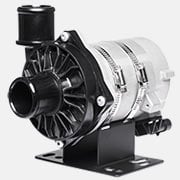
| Rated Voltage | 24V |
| Max Head | 24Meters, 25Meters |
| Max Flow | 100L/Min, 110L/Min |
| Inlet Diameter | Φ38mm |
| Outlet Diameter | Φ38mm |
| Dimensions | 183x103x240mm |
| Noise | ~60dB |
| Liquid Temperature | -40~125 Celsius |
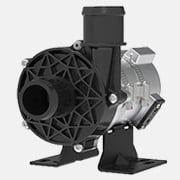
| Rated Voltage | 24V |
| Max Head | 45 Meters |
| Max Flow | 100L/Min |
| Inlet Diameter | Φ38mm |
| Outlet Diameter | Φ38mm |
| Dimensions | 175x100x170mm |
| Noise | ~60dB |
| Liquid Temperature | -40~125 Celsius |
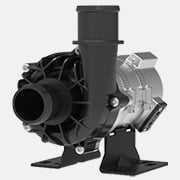
| Rated Voltage | 24V |
| Max Head | 18M |
| Max Flow | 280L/Min |
| Inlet Diameter | Φ38mm |
| Outlet Diameter | Φ38mm |
| Dimensions | 188.1x100x176.9mm |
| Noise | ~60dB |
| Liquid Temperature | -40~125 Celsius |
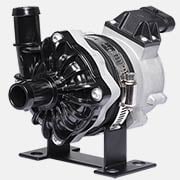
| Rated Voltage | 13.5V, 24V |
| Max Head | 14M |
| Max Flow | 55L/Min |
| Inlet Diameter | Φ20mm |
| Outlet Diameter | Φ20mm |
| Dimensions | 131x112x80mm |
| Noise | ~48dB |
| Liquid Temperature | -40~125 Celsius |
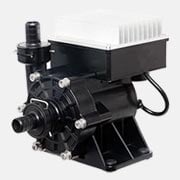
| Rated Voltage | 220V |
| Max Head | 38M, 48M |
| Max Flow | 100L/Min,100L/Min |
| Inlet Diameter | Φ20mm |
| Outlet Diameter | Φ20mm |
| Dimensions | 223.4×126.0x178.0mm |
| Noise | ~50dB |
| Liquid Temperature | -30~70 Celsius |
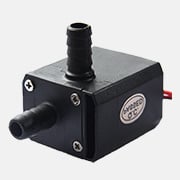
| Rated Voltage | 6V, 12V |
| Max Head | 1.5 Meters, 3 Meters |
| Max Flow | 2.5L/Min, 4L/Min |
| Inlet Diameter | Φ8mm |
| Outlet Diameter | Φ8mm |
| Dimensions | 53.5x40x34mm |
| Noise | ~30dB |
| Liquid Temperature | -25~50 Celsius |
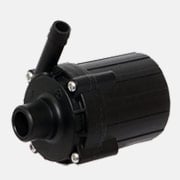
| Rated Voltage | 12V, 24V, 24V |
| Max Head | 8Meters, 13 Meters, 15 Meters |
| Max Flow | 10L/Min, 12L/Min, 13L/Min |
| Inlet Diameter | Φ18mm |
| Outlet Diameter | Φ9.8mm |
| Dimensions | 82.45×48.0x67.6mm |
| Noise | ~40dB |
| Liquid Temperature | -25~80 Celsius |
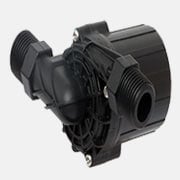
| Rated Voltage | 12V, 24V |
| Max Head | 3M, 8M |
| Max Flow | 8L/Min, 13L/Min |
| Inlet Diameter | Φ20mm |
| Outlet Diameter | Φ20mm |
| Dimensions | 82.3x102x46.4mm |
| Noise | ~40dB |
| Liquid Temperature | -40~110 Celsius |
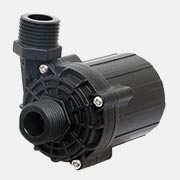
| Rated Voltage | 12V, 24V, 24V |
| Max Head | 8Meters, 13 Meters, 15 Meters |
| Max Flow | 10L/Min, 12L/Min, 13L/Min |
| Inlet Diameter | Φ20mm (1/2 inch thread) |
| Outlet Diameter | Φ20mm (1/2 inch thread) |
| Dimensions | 83.4x48x69.7mm |
| Noise | ~40dB |
| Liquid Temperature | -25~80 Celsius |
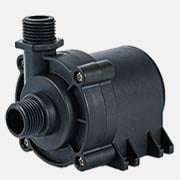
| Rated Voltage | 12V, 24V |
| Max Head | 8M, 15M |
| Max Flow | 20L/Min, 25L/Min |
| Inlet Diameter | Φ20mm (1/2 inch thread) |
| Outlet Diameter | Φ20mm (1/2 inch thread) |
| Dimensions | 96.9x73x84.3mm |
| Noise | ~40dB |
| Liquid Temperature | -20~100 Celsius |
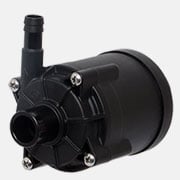
| Rated Voltage | 12V, 24V,24V,24V |
| Max Head | 11M, 20M, 25M, 32M |
| Max Flow | 20L/Min, 24L/Min, 25L/Min, 26L/Min |
| Inlet Diameter | Φ20.3mm |
| Outlet Diameter | Φ11.3mm |
| Dimensions | 90.9x60x85.85mm |
| Noise | ~40dB |
| Liquid Temperature | -25~80 Celsius |
FEATURES CATEGORY
SUPPORT & BLOG
Get Product Catalog
16.5Mb PDF File, Covers 200+ Models Products.
